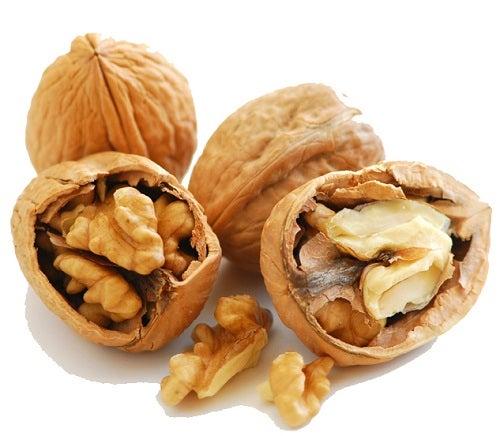
Nuts it is quite tasty, appreciated even by the little ones and rich in nutrients and beneficial properties for health.
It is a powerful concentrate of antioxidants, micronutrients ed energy, for this reason, it is one of the most effective energy foods. Let's find out better!
- What is dried nuts
- Properties and benefits
- Nutritional values and calories
- List of nuts
- Difference between dried fruit and nuts
- How many nuts can you eat per day?
- Do nuts make you fat?
What is dried nuts
Nuts it is a set of seeds, generally covered with a hard and inedible shell. AND rich in nutrients, energy e beneficial properties for health, but not only that, it also has a rather pleasant flavor and is appreciated both in dishes and consumed individually.
Properties and benefits
All types of nuts have similar health-promoting properties that also affect many oil seeds, such as pumpkin or sunflower seeds. Here are some benefits of nuts:
- It is rich in minerals, like selenium, magnesium, phosphorus, manganese, iron e Vitamin E.
- It is rich in fibers, which increase satiety and promote intestinal transit.
- It is rich in antioxidants, which counteract chronic diseases.
- It reduces inflammation and associated diseases.
- It improves blood sugar, cholesterol and triglyceride levels.
- Increase good cholesterol levels.
- Improve blood pressure.
- Lower cardiovascular risk.
Nutritional values and calories
100 g of dried nuts provide:
- 630 kcal
- 19 g protein
- Lipids 59,5 g
- Saturated fat 5 g
- G carbohydrates 5
- Sugars 3 g
- Fiber 8,6 g
List of nuts
Among the most common nuts we find:
- Hazelnuts;
- peanuts;
- pistachios;
- anacardi;
- nights macadamia;
- nights pecan;
- Pine nuts;
- nights;
- almonds.
Difference between dried fruit and nuts
There is a tendency very often to do confusion between dried fruit and dried fruit in shell. In reality, it is two completely different foods: in fact, for dried / dried fruit we mean fresh fruit subjected to a dehydration process in which, therefore, water is eliminated, such as, for example, raisins or dried plums.
The differences compared to dried fruit, therefore, are quite evident, both in terms of organoleptic and nutritional characteristics.
For example:
- Dried fruit in shell it is among the foods rich in proteins and good fats;
- dehydrated fruit it is rich in carbohydrates and sugars and low in proteins and fats.
How many nuts can you eat per day?
A standard serving of nuts is 30 g, but you must always take into account your needs, state of health and lifestyle.
Do nuts make you fat?
Nuts, like any other food, it is not able to make us accumulate excess pounds, if consumed properly, in fact, it is also indicated in slimming diets.
However, the calories of nuts are hightherefore, it is necessary to pay attention to the quantities.
Bibliography and sources
Mediterranean diet supplemented with nuts reduces waist circumference and shifts lipoprotein subfractions to a less atherogenic pattern in subjects at high cardiovascular risk, Atherosclerosis
Prebiotic fiber modulation of the gut microbiota improves risk factors for obesity and the metabolic syndrome, Gut Microbes
Nut consumption and age-related disease, Maturitas
Effect of nut consumption on oxidative stress and the endothelial function in metabolic syndrome, Clinical Nutrition
Dietary Almonds Increase Serum HDL Cholesterol in Coronary Artery Disease Patients in a Randomized Controlled Trial, The Journal of Nutrition
Pistachio nuts reduce triglycerides and body weight by comparison to refined carbohydrate snack in obese subjects on a 12-week weight loss program, Journal of the American College of Nutrition
Effect of a walnut meal on postprandial oxidative stress and antioxidants in healthy individuals, Nutrition Journal
Food Composition Database for epidemiological studies in the country, European Oncological Institute


























